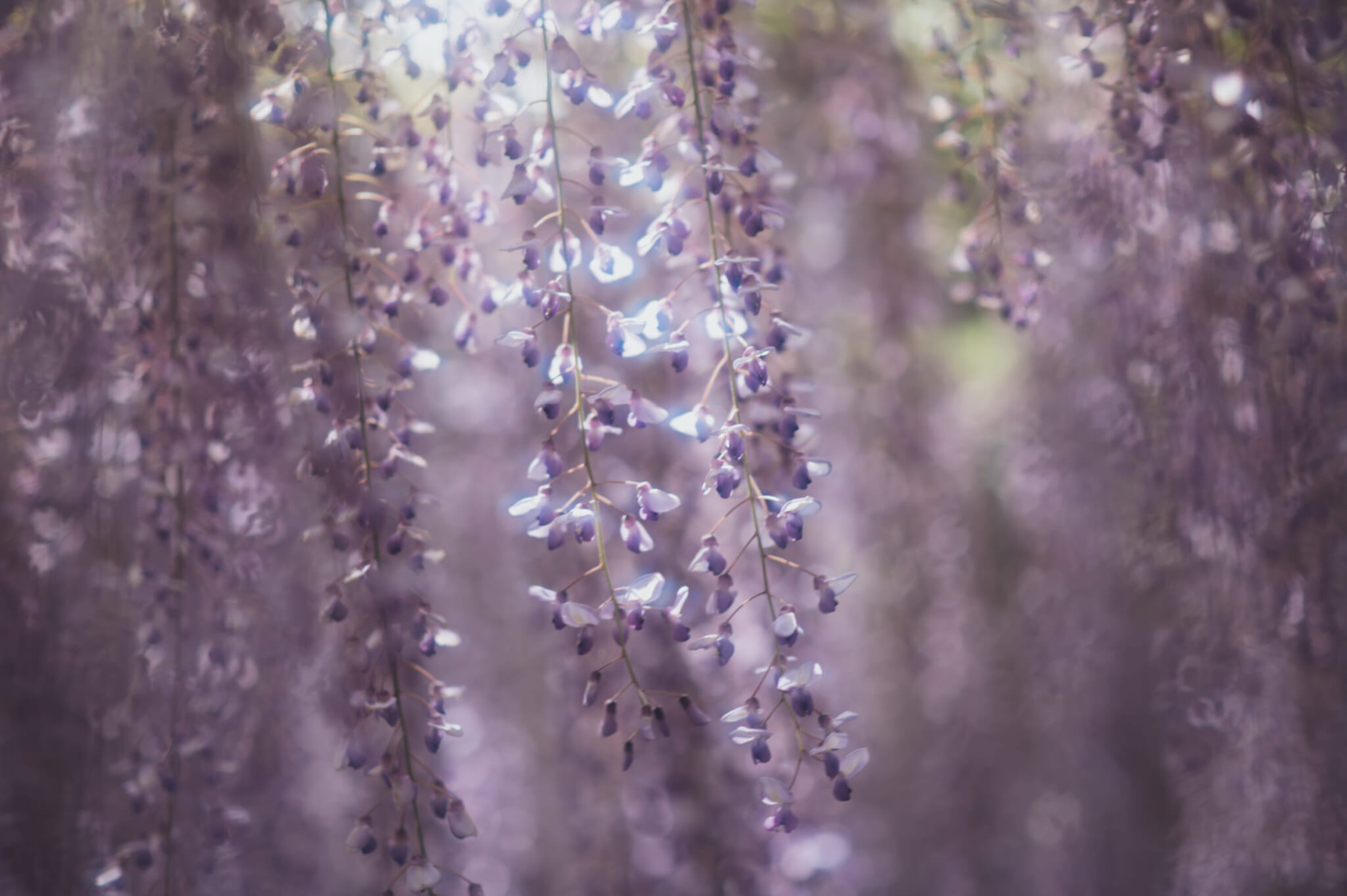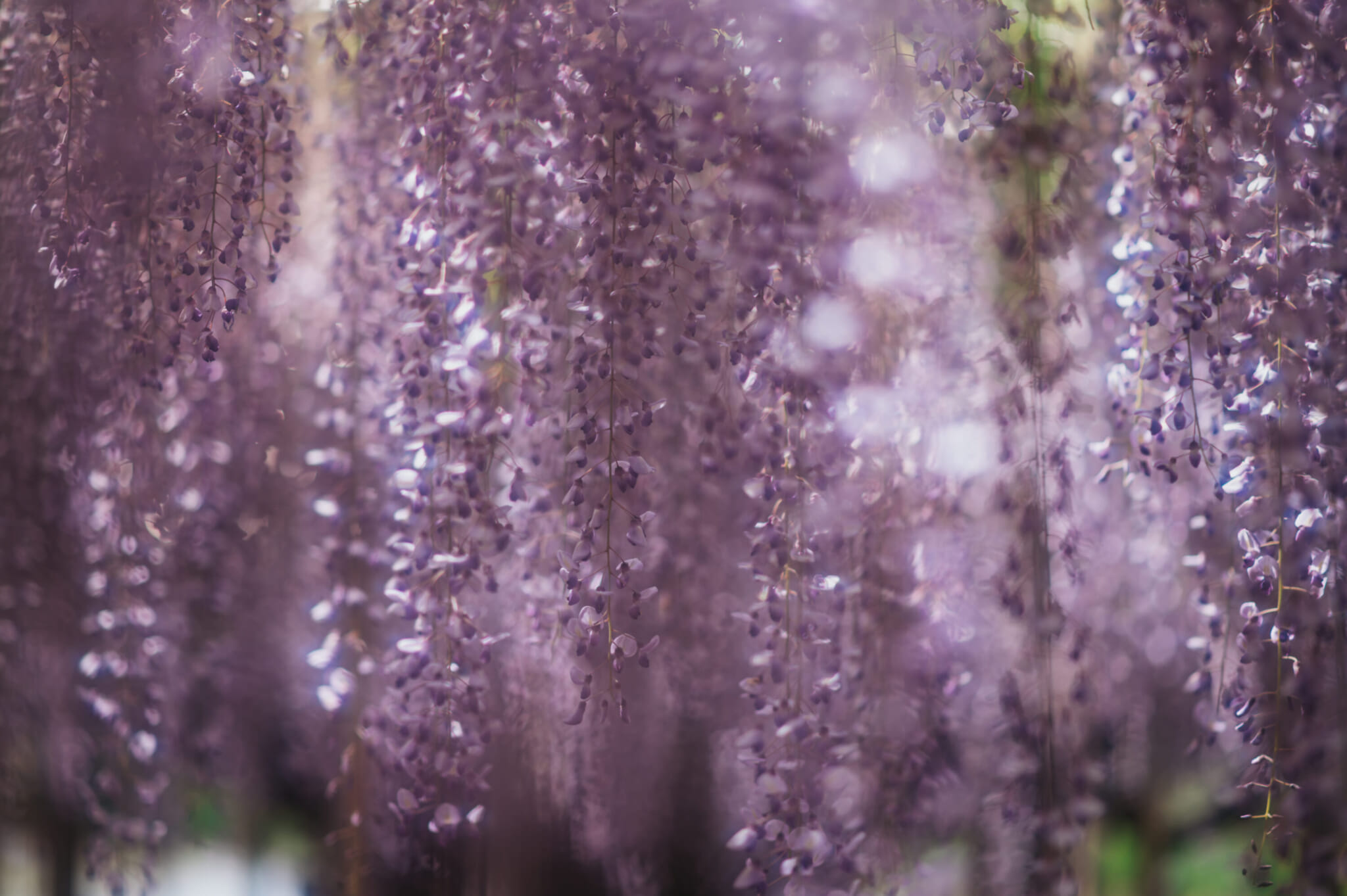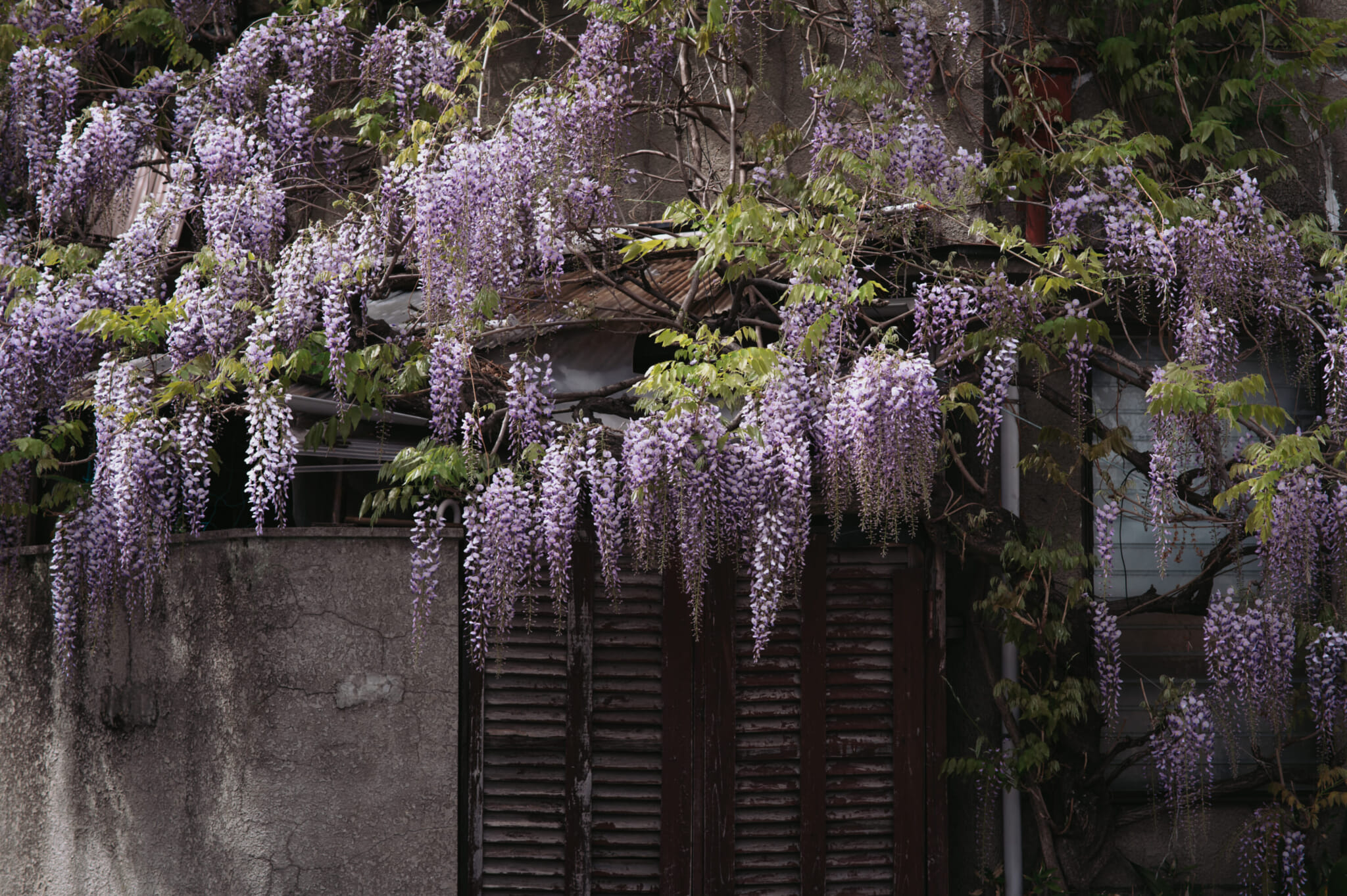When cherry blossom season is over, it’s wisteria time. The beautiful purple vines decorate Japan from mid-April to May, creating colorful walls and bubbling canopies across the country. Adored here, these spectacular flowering plants often feature in literature and plays. So, we thought we’d have a look at the relationship between Japan and the delightful purple (as well as white, pink and yellow) hanging flowers.
Origins of Wisteria in Japan
Known as fuji here, wisteria has been cherished in Japan for centuries. The oldest fabric in this country was made using the fibers of wisteria vines and is still made today. Called Fuji-fu (wisteria cloth), it was designated a tangible cultural property in 1991. The idea of wearing wisteria fiber potentially came from the positive implied meaning of wisteria (but more on that later).
During the Heian period (794-1185), only royalty and aristocracy were allowed to wear purple due to its royal connotations. Interestingly, the west also had this idea of purple symbolizing wealth and royalty, even though the purple Japanese wisteria flower didn’t arrive there until the 1800s.
Since the Edo period, wisteria has been cultivated using trellises, to get that enviable purple canopy and spread the blooms far and wide. In the past, it was also valued for medicinal purposes.
Japanese Surnames
A hint at how prized the flower was in the past can be seen across Japan today, as many surnames contain the wisteria kanji. It features in the Fujiwara surname, which would have been bestowed by the emperor. Most of the common wisteria surnames are direct derivations, including, of course, Fuji, plus less obvious ones such as Sato. In most surname rankings, Japanese surnames using the kanji for wisteria make up around three out of the top 10.
Famous Japanese people with the kanji for wisteria in their surnames include actors Takako Fuji (Kayako Saeki from The Grudge) and Takeru Satoh (Rurouni Kenshin), as well as racing driver Takuma Sato.
On Japanese family crests, wisteria was previously depicted in its natural, descending form. This gradually started to change, however, as families began to believe that displaying wisteria descending would bring about misfortune for the family, so they showed it ascending instead.

Photo by Lisa Knight
Meaning of Wisteria in Japan
Flowers are all said to have some kind of meaning and wisteria is no different. In Japan, it is thought to represent good luck, kindness and longevity thanks to its long vines. The beautiful blooms are also believed to have romantic connotations.
Occasions to Give Wisteria, or Not
It is popular to give wisteria to newlyweds as it represents a long and happy marriage. It also makes for great celebratory presents. Make sure you don’t give wisteria to someone who is sick, though, as it might make their condition even worse.

Photo by Lisa Knight
Wisteria in Japanese Culture
Unsurprisingly, these flowing flowers appear in literature, paintings, art and theater productions.
They featured in the Kojiki, a Japanese chronicle of myths, legends, hymns, genealogies, oral traditions and semi-historical accounts, completed in 712 AD. Wisterias were used to win the heart of the goddess Izushiotome. She wasn’t open to the prospect of marriage, until one of her suitors came bearing them.
Wisteria also lends itself to poetry. It is the main subject no less than 28 times in the oldest known classical Japanese poetry collection, Manyoshu.
The flower is also shown in paintings dating back through the ages, including, most famously, “The Tale of Genji.”
Wisteria is said to bring good luck to humans and bad luck to demons. An example is the demon from Kunisaki in Kyushu, which is typically depicted with wisteria vines tied around its body and limbs. These vines are believed to weaken the power of the demon.
There’s also the kabuki dance, “Fuji Musume,” developed in 1826. Originally designed as part of a series of five dances, it is the only version which is still performed today. During the performance, the dancer wears a wisteria in their hair, and the stage is decorated with the colorful flowers.
More recently, the popular anime franchise Demon Slayer used wisteria to ward off demons, much like the relationship between vampires and garlic.
Where to Spot Wisteria:
Wisteria flowers make for an incredible sight, and many of the largest trees go back hundreds or even thousands of years.
Here are some of our recommended spots:
- Kameido Tenjin Shrine (Tokyo)
- Kawachi Wisteria Garden (Fukuoka)
- Ashikaga Flower Park (Tochigi)









